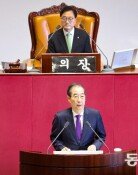[Opinion] Old Enemies, New Friends
The sheer might of napalm bombs used by the U.S. during the Vietnam War became famous by a single photo. The photo, taken in 1972, showed a Vietnamese girl named Kim Phuc screaming and running away from the attack with severe burns. The vivid depiction of the terror and misery of wartime earned the photo a Pulitzer Prize. An American reporter once wrote, Napalm does melt the flesh, and the flesh runs right down their faces onto their chests and it sits there and grows there. And when gangrene sets in, they cut off their hands or fingers or their feet; the only thing they cannot cut off is their head.
Visitors who entered Vietnams Cu Chi tunnels are always amazed. With their bare hands, the Vietcong dug honeycomb-like underground tunnels extending nearly 200 km in order to fight the American soldiers. The tunnels, big enough for an adult to barely enter, cause visitors to suffer from claustrophobia. The Vietcong constructed armory, bedrooms, and kitchens in such small and dark underground tunnel. They endured under such conditions for 20 years, and finally, in 1975 they won the war.
The toll of the war was 1.5 million dead Vietnamese and 60,000 dead American soldiers. Chemical agents such as Agent Orange and other herbicides sprayed by U.S. forces during the war are still haunting not only the second generation but also the third generation. Nevertheless, presently, Vietnam does not hesitate in shaking hands with the U.S. Both countries normalized diplomatic relations in 1995, and last year Vietnamese Prime Minister Phan Van Khai visited the U.S. for a summit meeting. Vietnams exports to the U.S. surpassed an annual $6 billion, and it requested most favored nation treatment in exchange for assisting the U.S. in searching for remains of its missing soldiers.
Vietnam is also not reluctant in becoming the U.S. military partner. Both countries share the common interest of keeping China in check, so they are putting aside their differences for the time being. Ironically, U.S. Secretary of Defense Donald Rumsfeld, who held the same post in the last stages of the Vietnam War 30 years ago, met with his Vietnamese counterpart and announced plans to strengthen military cooperation.
It is quite interesting to see two former bitter enemies come together. However, they are coming together not because of mere goodwill. It is a realistic and unavoidably beneficial decision. After all, in international relations, there are neither eternal enemies nor eternal friends.
Kim Chung-sik, Editorial Writer, skim@donga.com







